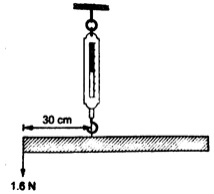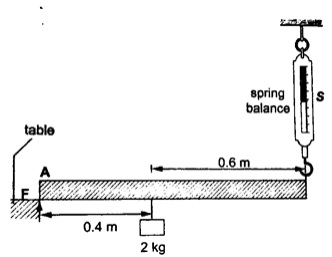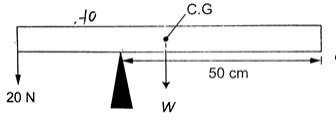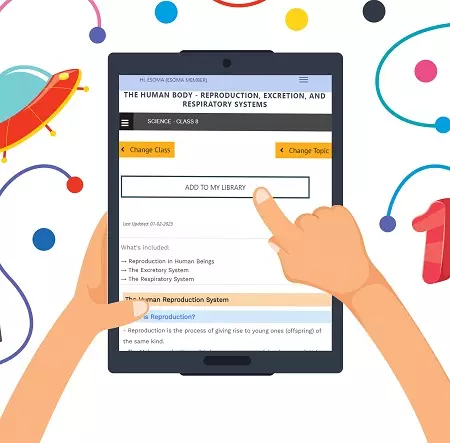- For a body to be in equilibrium (neither moving nor rotating), under the action of parallel
forces, the following conditions will be satisfied;
- The sum of upward forces must be equal to the sum of downward forces.
- The sum of clockwise moments equals the sum of anticlockwise moments.
- The two are called the first and second condition of equilibrium respectively.
Practice Example 1
1. A uniform rod of length 1.0 m is hung from a spring balance as shown and balanced in
horizontal position by a force of 1.6 N. Determine:
a) The weight of the rod.
b) Reading of the spring balance.

Solution
a) Let the weight of the rod be 'W'. W acts at 50 cm mark, therefore taking moments
about point of suspension, clockwise moments = W x 0.2 Nm = 0.2W Nm.
Anticlockwise moments = 1.6 x 0.3 = 0.48 Nm.
Using the law of moments, then
Anticlockwise moments = clockwise moments
0.48 = 0.2 W, hence W = 2.4 N
b) Upward forces = downward forces
Downward force = W + 1.6 N
= 2.4 + 1.6 = 4.0 N
Upward force = reading of the spring balance = 4.0 N
Practice Example 2
2. A uniform rod is 1.0 m long weighs 5 N. It is supported horizontally at one end by a
spring and the other end rests on a table as shown below. A mass of 2 kg is hung from
the rod as shown; determine:
a) Reading of the spring balance
b) Reaction force, F, from the table.

Solution
a) The 2kg mass and the weight of the rod (5 N) gives clockwise moment while the
spring balance provides anticlockwise moments.
Clockwise moments = (2 x 10) x 0.4 + (5 x 0.5) = 10.5 Nm.
Anticlockwise moments = S x 1 (reading of the spring balance)
1S = 10.5, hence S = 10.5 N.
b) Upward forces = downward forces.
Downward forces = (2 x 10) + 5 = 25 N.
Therefore F + 10.5 = 25, hence F = 14.5 N.





